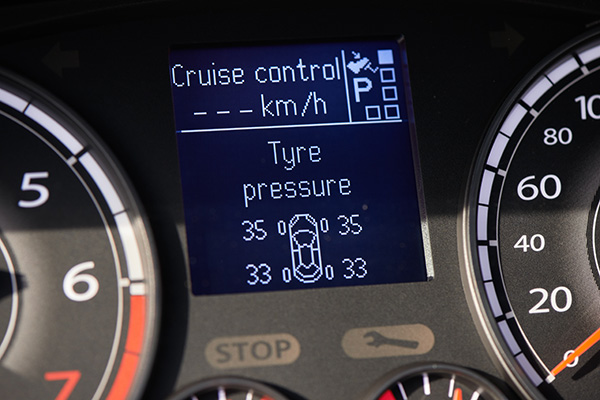
As temperatures climb, so does the pressure in your tires—but not always in predictable ways. Tire pressure changes are one of the most common issues drivers face in hot weather, and understanding how heat affects your tires can help you stay safer on the road and extend the life of your tires.
Whether you’re driving short distances or hitting the highway for a summer road trip, your tires are constantly adjusting to the heat. The key is knowing what to expect and when to take action.
Why Tire Pressure Changes in Hot Weather
Air expands when it heats up. That means when the sun beats down on your vehicle or you drive on hot pavement, the air inside your tires heats up and expands. As a result, your tire pressure rises—even if you haven’t added any air.
On average, tire pressure increases by about 1 PSI (pound per square inch) for every 10 degrees Fahrenheit in temperature. That means a tire that was perfectly inflated on a 60-degree morning could be overinflated by the time it’s 90 degrees outside.
While it may seem harmless, even a slight change in pressure can impact how your vehicle handles, how evenly your tires wear, and how efficiently you use fuel.
Risks of Overinflated Tires
When tire pressure gets too high, the center of the tread bears more of the load, causing uneven wear. Overinflated tires also have a reduced surface area in contact with the road, which can decrease traction and increase stopping distances, especially in wet conditions.
In extreme heat, overinflation can even lead to blowouts. The combination of high-speed driving, hot pavement, and rising internal pressure can cause the tire to exceed its limits. Blowouts are sudden and dangerous, particularly at highway speeds.
What Happens When Tires Are Underinflated
While overinflation is more likely during the hottest parts of the day, underinflation can occur overnight or in early morning when temperatures drop. Underinflated tires wear more on the outer edges, flex more while driving, and build up internal heat faster due to increased rolling resistance.
This internal heat makes underinflated tires vulnerable to failure as well. You may also notice reduced fuel economy and poor handling, especially in corners or during quick stops.
Why Regular Pressure Checks Matter
Tire pressure can fluctuate from day to night and even from morning to afternoon. That’s why relying on visual inspection alone isn’t enough. Modern tires are designed to maintain their shape even when pressure is low, allowing them to appear normal even when dangerously underinflated.
To stay ahead of these fluctuations, it’s important to check your tire pressure regularly, ideally once a week during hot weather. Always check tire pressure when the tires are “cold”—before you’ve driven for the day or at least three hours after your last drive. This gives you the most accurate reading.
The Role of TPMS (Tire Pressure Monitoring System)
Many vehicles today are equipped with a Tire Pressure Monitoring System that alerts you if pressure drops significantly. However, most systems don’t provide real-time PSI readings for overinflation. That means your tires could be running too hot without triggering a warning light.
A handheld tire gauge or a built-in digital display (if your car is equipped with one) is still the most reliable way to accurately monitor your tire pressure. Consider carrying a portable gauge in your glove box or center console, especially for summer travel.
When to Adjust Pressure and What to Watch For
You should always follow the recommended pressure listed on the placard inside your driver’s door—not the number on the tire’s sidewall, which indicates the maximum allowable pressure.
If your pressure is too high during a heatwave, it may be worth letting out a small amount of air to stay within the safe range. But be cautious—never reduce pressure while the tires are hot, as this can lead to underinflation once they cool down.
Also, pay attention to how your car feels on the road. If you notice a harsher ride, less grip, or increased road noise, it could be a sign that your pressure is off. Pull over and check if you suspect anything is off.
Protect Your Tires With Pro Drive in Corpus Christi, TX
Your tires are the only part of your car that touches the road, and they deserve year-round attention, especially when summer temperatures push them to their limits. At Pro Drive in Corpus Christi, TX, we offer quick, accurate tire pressure checks and expert recommendations to keep you safe in the heat.
Whether you need a pressure adjustment, a tire rotation, or a full inspection, we’re here to help keep your tires in top shape. Visit either of our Corpus Christi locations and stay confident behind the wheel this summer.